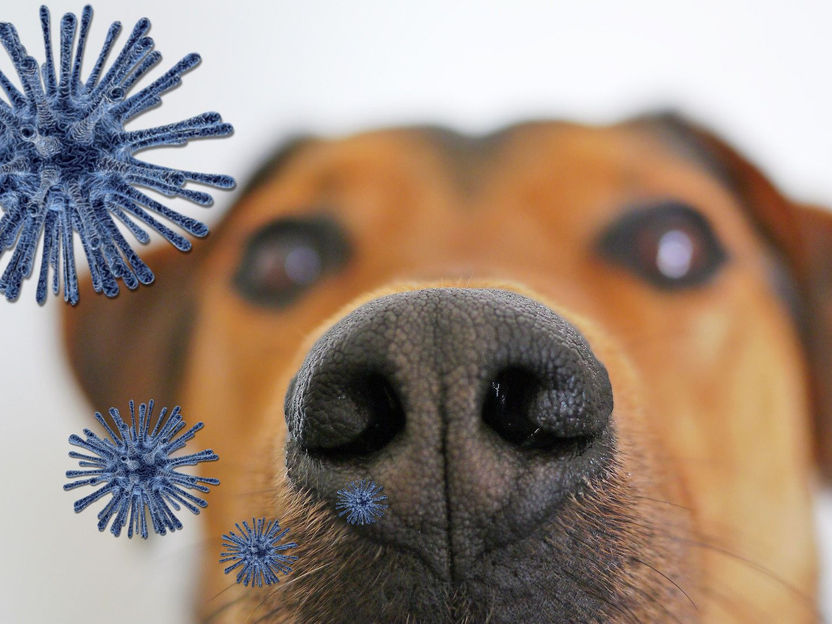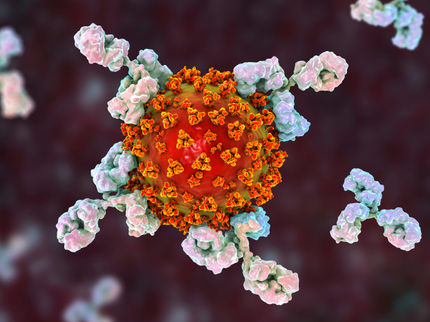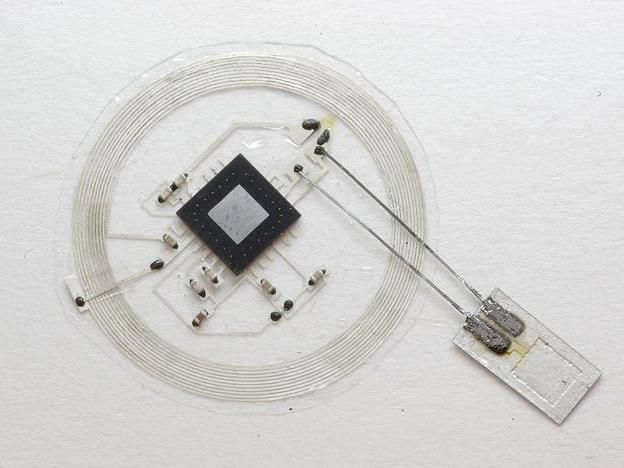Canine Diag’noses’
Dogs can detect SARS-CoV-2 infected humans on all tested body fluids with high accuracy
Advertisement
A research team led by the University of Veterinary Medicine Hannover (TiHo), in cooperation with the Bundeswehr, the Hannover Medical School and the University Medical-Center Hamburg-Eppendorf, published a new study and a review article in the journal BMC Infectious Diseases on detection dogs that can sniff out people infected with the SARS CoV-2 virus. The new study showed that detection of SARS-CoV-2 infected individuals was independent of which body fluid was presented. This study does not only confirm the growing scientific evidence that dogs can be a fast, rapid screening tool to spot SARS-CoV-2 infected individuals, but also that the changes in volatile organic compounds release are independent of the body cell infected. For medical scent detection dogs, all tested body fluids appear to be similarly suited for reliable detection of SARS-CoV-2 infected individuals.

Symbolic image
pixabay.com
The study was conducted with ten specialised scent detection dogs of the Bundeswehr. After training, they were able to correctly identify 92% of over 5000 samples presented. Dogs were trained only with saliva samples but in the study urine and sweat samples were also presented. The samples were automatically distributed at random and neither the dog handlers involved nor the researchers on site knew which samples were positive and which were used for control purposes. The dogs were able to discriminate between samples of infected (positive; symptomatic and non-symptomatic) and non-infected (negative) individuals with an average diagnostic sensitivity and specificity of 95% and 98% specificity for urine, 91% and 94% for sweat, and 82% and 96% for saliva respectively. Sensitivity refers to the detection of positive samples.
The specificity designates the detection of negative control samples
Since the start of domestication, man has used canines’ exceptional olfactory capabilities for scent detection to hunt down prey, but also to be protected themselves from predators. Nowadays, dogs are also increasingly used in the field of medical olfactory recognition (Jendrny et al., 2021). They are able to detect infectious and non-infectious diseases like different types of cancer, malaria, bacterial and viral infections with a high level of accuracy. The dog’s olfaction is second to none and not to compare with olfaction of humans; dogs have more than a 1000 genes related to olfaction, a higher nasal surface, better airflow for scenting, 40 times more olfactory receptor cells (200-300 million vs. 5-8 million in people) and an additional scenting system (vomeronasal organ) to name a few examples. To illustrate the tremendous canine olfactory sensitivity, a dog could detect the equivalent of one drop of a liquid in 50.000.000 litres of water (20 Olympic-size swimming pools).
The recently announced study “back to culture”, which is in collaboration with Hannover Medical School, the University Medical Center Hamburg-Eppendorf, Hannover Concerts, ProEvent, Kynoscience, the German Armed Forces and Awias Aviation Services and financially supported by the Lower Saxony‘s Ministry of Science and Culture, will now apply these findings in the field. Medical scent detection dogs will be used as a real-time detection unit and compared to antigen and rtRT-PCR tests in a real-life scenario at multiple music events this autumn. This will provide further insights of how scent detection dogs can help best in the fight against the current and future pandemics.
Dr. Esther Schalke, EBVS® specialised veterinary behaviourist and major at the School for Service Dogs of the Bundeswehr School of Dog handling said: “This study is another proof of the potential scent detection dogs could have in controlling the current pandemic. It is difficult to imagine, but canine scent detection is three orders of magnitude more sensitive than current available instruments.”
Prof. Albert Osterhaus, department chair of the Research Center for Emerging Infections and Zoonoses, University of Veterinary Medicine Hannover, said: “It is known that infectious respiratory diseases can release specific volatile organic compounds and this study highlights that dogs can recognize these volatile organic compounds pattern across different body fluids.“
Prof. Holger A. Volk, department chair of small animal medicine and surgery, University of Veterinary Medicine Hannover, said: “All scientific mosaic puzzle pieces are coming together now, providing a clear picture that the canine olfactory scent is second to none for the detection of SARS-CoV-2 infected individuals. Future studies in the field are now necessary to demonstrate how dogs can be best deployed.”
Original publication
Jendrny, P., Twele, F., Meller, S. et al.; "Scent dog identification of SARS-CoV-2 infections in different body fluids"; BMC Infect Dis 21, 707 (2021).
Jendrny, P., Twele, F., Meller, S. et al.; "Canine olfactory detection and its relevance to medical detection"; BMC Inffect Dis (2021).
First publication in the field: Jendrny, P., Schulz, C., Twele, F. et al.; "Scent dog identification of samples from COVID-19 patients – a pilot study"; BMC Infect Dis 20, 536 (2020).
Other news from the department science
Most read news
More news from our other portals
See the theme worlds for related content
Topic world Diagnostics
Diagnostics is at the heart of modern medicine and forms a crucial interface between research and patient care in the biotech and pharmaceutical industries. It not only enables early detection and monitoring of disease, but also plays a central role in individualized medicine by enabling targeted therapies based on an individual's genetic and molecular signature.

Topic world Diagnostics
Diagnostics is at the heart of modern medicine and forms a crucial interface between research and patient care in the biotech and pharmaceutical industries. It not only enables early detection and monitoring of disease, but also plays a central role in individualized medicine by enabling targeted therapies based on an individual's genetic and molecular signature.

























































